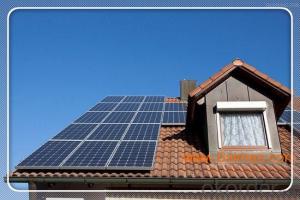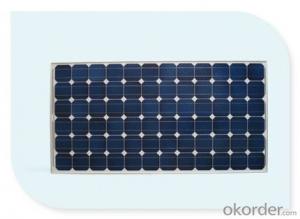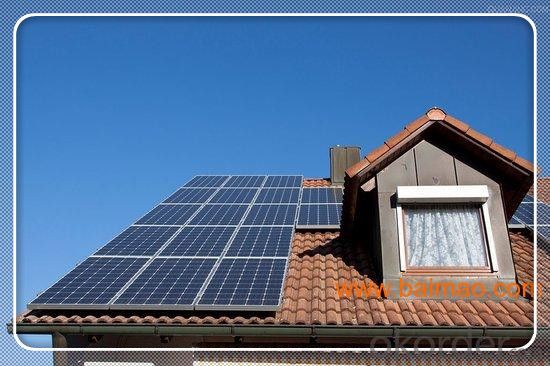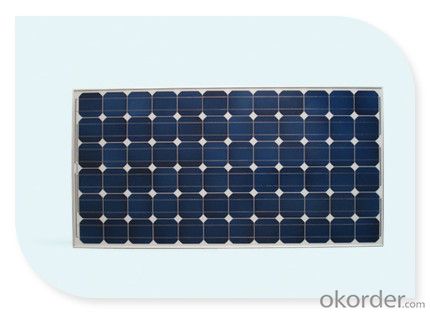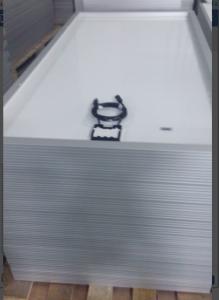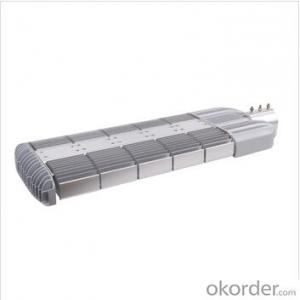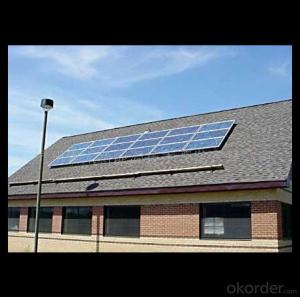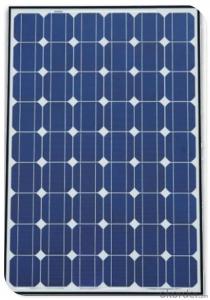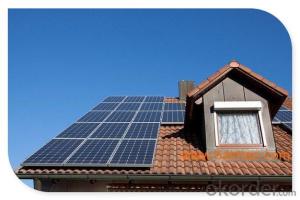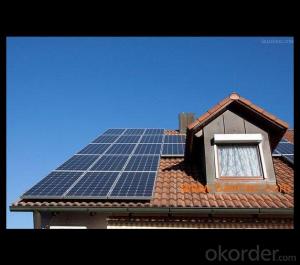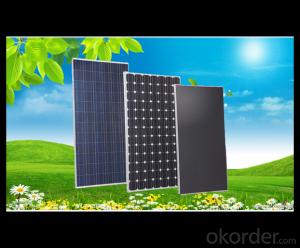Washington Solar Panels:270w Direct Factory Sale Price 260-300watt Solar Panels
- Loading Port:
- China main port
- Payment Terms:
- TT OR LC
- Min Order Qty:
- 10000 watt
- Supply Capability:
- 100000 watt/month
OKorder Service Pledge
OKorder Financial Service
You Might Also Like
Specification
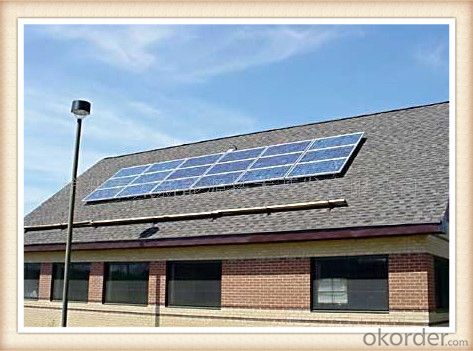
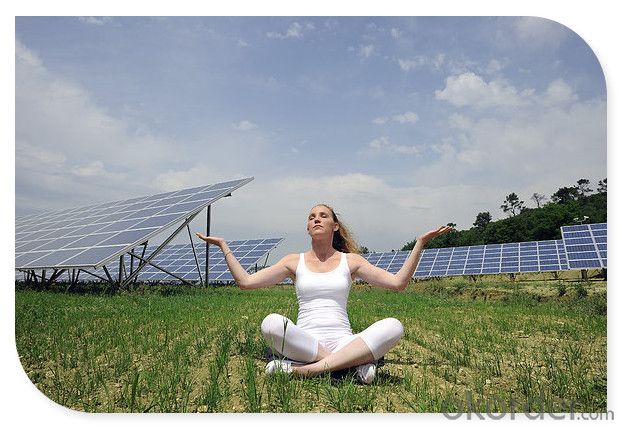
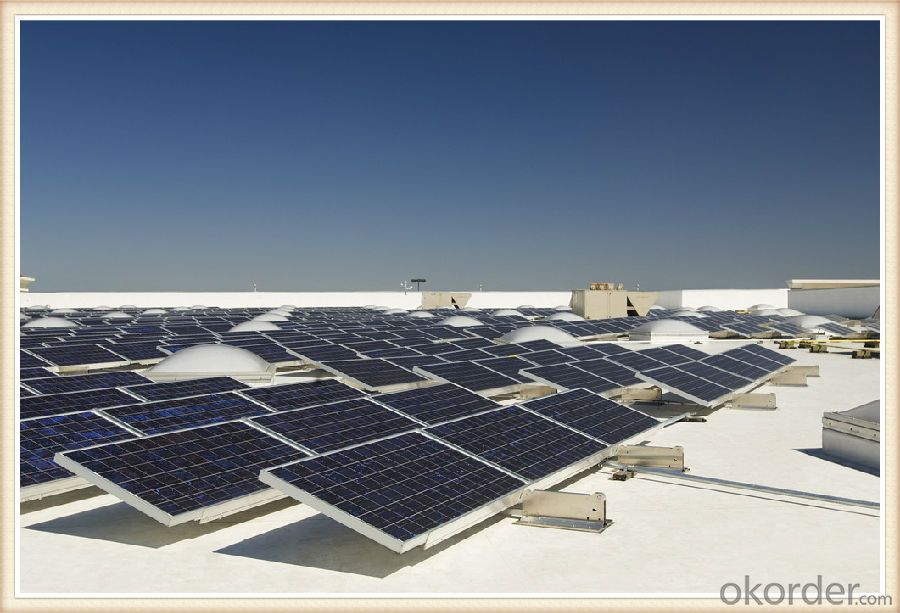
Solar Module Introduction
Solar modules use light energy (photons) from the sun to generate electricity through the photovoltaic effect. The majority of modules use wafer-based crystalline silicon cells or thin-film cells based on cadmium telluride or silicon. The structural (load carrying) member of a module can either be the top layer or the back layer. Cells must also be protected from mechanical damage and moisture. Most solar modules are rigid, but semi-flexible ones are available, based on thin-film cells. These early solar modules were first used in space in 1958.
Electrical connections are made in series to achieve a desired output voltage and/or in parallel to provide a desired current capability. The conducting wires that take the current off the modules may contain silver, copper or other non-magnetic conductive transition metals. The cells must be connected electrically to one another and to the rest of the system. Externally, popular terrestrial usage photovoltaic modules use MC3 (older) or MC4 connectors to facilitate easy weatherproof connections to the rest of the system.
Specification
Model Type | |
Peak Power-Pmax(W) | 5-200W |
Open Circuit Voltage-Voc(V) | 44.2 |
Maximum Power Voltage-Vmp(V) | 36 |
Short Circuit Current-Isc(A) | 5.4 |
Maximum Power Current-Imp(A) | 5 |
Maximum System Voltage | 1000V DC |
Maximum Series Fuse Rating | 10A |
Power Tolerance | -1~+3% |
Temperature Coefficients of Pmax | -0.45%/℃ |
Temperature Coefficients of Voc | -0.348%/℃ |
Temperature Coefficients of Isc | 0.031%/℃ |
Nominal Operating Cell Temperature | 44.5±2℃ |
Standard Testing Condition(STC) | Irradiance:1000W/m²;Temperature:25℃;AM=1.5 |
Qualification Test Parameters | |
Operating Temperature | -40℃~+85℃ |
Storage Temperature | -40℃~+85℃ |
Pressure Bearing | ≥5400Pascal/m² |
Wind Bearing | ≥5400Pascal/m² |
Mechanical Characteristics | |
Cell Size | Mono 125*125mm±0.5 |
No.of Cells | 72pcs(6*12) |
Dimension | 1580*808*40mm |
Weight | 15.5Kg |
Glass | 3.2mm High Transmission,Low Iron |
Frame | Anodized Aluminum Alloy |
Junction Box | IP65Rated |
Internal Diodes | 3 Bypass Diodes |
Cable | 1*4.0mm² Length 900mm |
Images
Packing & Shipping:
We have rich experience on how to pack the panels to make sure the safety on shipment when it arrives at the destination.
The normal size is packed by 25pcs/ carton / pallet. Paper carton for FCL shipping and wood carton for LCL shipping.
Features
1.High reliability with guaranteed -3% to +5% power output tolerance, ensuring return on investment
2.High conversion efficiency based on leading innovative photovoltaic technologies
3.Withstands high wind-pressure and snow load, and extreme temperature variations
4.Attractive appearanceUnique frame design, high mechanical strength, and easy Installation
Warranty:
For c-Si panel: 25years output warranty for no less than 80% of performance, 10 years output warranty for no less than 90% of performance. Free from material and workmanship defects within 5 years.
For a-Si panel: 20 years output warranty for no less than 80% of performance, 10 years output warranty for no less than 90% of performance. Free from material and workmanship defects within 2 years.
•100% product quality protection
•100% on-time shipment protection
•100% payment protection for your covered amount
FAQ:
(1)What price for each watt?
It depends on the quantity, delivery date and payment terms.
(2)What is your size for each module? Can you tell me the Parameter of your module?
We have different series of panels in different output, both c-Si and a-Si. Please take the specification sheet for your reference.
(3)Can you provide the peripheral products of the solar panels, such as the battery, controller, and inverter? If so, can you tell me how do they match each other?
Actually we are only manufacturer of solar panels, but we could try to source them for you in China if you need. We could provide you an optimal system design to instruct you how to install.
(4)Do you have the CE, TUV, UL Certification?
We’ve already passed all the tests, and any certificate is available.
(5)Have you ever sold your products to companies in my country?
Of course, we have customers in all general PV markets, but I think we should expand our market share along with the market growth.
(6)When did your company set up? You are a new company, how can I believe your quality?
We entered into Solar PV industry in 2005, now we have several plants in manufacturing of a-Si and c-Si panels, and our capacity is 220MW per year. Till now we have already passed all the tests by authorized laboratories, e.g. TUV, VDE, UL.
(7)Can you help us install the module if we cooperate with you?
We haven’t entered into installation sector, but we have the plan in near future.
(8) How do you pack your products?
We have rich experience on how to pack the panels to make sure the safety on shipment when it arrives at the destination.
(9) Can you do OEM for us?
Yes, we can.
(10)Can we visit your factory?
Surely, I will arrange the trip basing on your business schedule.
- Q: I'm a carpenter, and can do electric work. I want to make some money installing Solar Panels. what's the best source?
- a few months ago there was an article in pop sci about a company that has started to make solar panels at a fraction of the cost of what they used to be by using a printing style process instead of glass panel style they should hit the mass market soon that would be the best bet for a starting point to beat out price problems to allow a competitive edge they also had a article for low wind high power residential windmills for that could help in the alternative fuel push
- Q: For a computer technology project we are using solar panels and trying to see different methods that will increase the output of solar power from these panels. For now, we have got polymer stickers and mirrors. Are there any more methods, or information that increase the solar power? Please and thank you :)
- Solar okorder /... to find local solar panel info and viability by city/state.
- Q: How do solar panels affect the local job market?
- Solar panels can have a positive impact on the local job market by creating new employment opportunities. The installation, maintenance, and manufacturing of solar panels require skilled and unskilled workers, thus stimulating job growth in the renewable energy sector. Additionally, the shift towards solar energy can lead to the creation of new businesses and industries, further contributing to job creation and economic development in the local community.
- Q: I am moving to Hawaii and the house we are living in has independent electricity. (solar panels and gas powered generators.)
- You would have some kind of thing that captures the kinetic energy and transfers it to electrical energy so it would run, but, yeah.
- Q: Also, what's the solar panel's rate of producing electricity?
- Solar thermal in commercial applications is more productive than natural gas, taking in consideration the sun must be out. the reason being is when natural gas is exposed to a heating element(boiler, hot water heater) it loses efficiency. lets say solar thermal can produce a therm of hot water, but that would equal .2 therms of natural gas using an 80 percent efficient boiler. solar being close to 95 percent efficient. No boiler can do that. now when the sun goes down, fossil fuel can beat electrically stored energy, not stored steam energy in a thermal plant for example. but that all depends on efficient steam generators.
- Q: i was told that by making a solar panel they cause more pollution than they will end up getting rid of. Is that true?
- A study by the US Department of Energy shows that, depending on your solar panels, the energy payback is to 4 years. Solar panels usually last 25 years, so solar manufacturing is very green. That said, if you buy American made panels, it saves more carbon from the transport costs. Something to consider in choosing your panels.Actually, most panel manufacturers will recycle the panels after you’re through in 25 years. If they don’t, don’t buy those panels. However, it’s hard to say whether people will actually recycle them because most panels are still being used today. So it’s up to you find out about the manufacturer’s panel recycling program. From what I understand, they will come to you and take them away at no charge.
- Q: What makes them stop working after a while?
- They are used in an environment that's very harsh for semiconductors, especially the high temperatures. Ion migration and many other failure mechanisms increase with temperature. Thermal expansion adds its own mechanical stresses.
- Q: I was thinking about getting some GE Solar Panels and on there website that I am on, I didn't really see a price. can anybody give me maybe an estimate on how much each one would cost? thanks
- I know someone that paid $600 a panel. I am not sure what kind or size, sorry.
- Q: Can I use a regulator from a car to regulate the voltage from a solar panel to a battery?
- solar panels will naturally produce a certain DC voltage which is what your battery needs - the current will vary based on the sun light. You need probably 4V to have some over voltage. So based on your specs look at having at least 4 V but not too much over that (tells you how many panels you need in series) I would have blocking diodes (probably the solar cell has them built in) to insure the battery does not discharge thru the panel.
- Q: Can solar panels be used for heating swimming pools?
- Yes, solar panels can be used for heating swimming pools. Solar thermal panels, specifically designed for pool heating, capture the sun's energy and transfer it to the pool water, increasing its temperature. This renewable and eco-friendly method is a popular choice for pool owners looking to save on energy costs and reduce their carbon footprint.
Send your message to us
Washington Solar Panels:270w Direct Factory Sale Price 260-300watt Solar Panels
- Loading Port:
- China main port
- Payment Terms:
- TT OR LC
- Min Order Qty:
- 10000 watt
- Supply Capability:
- 100000 watt/month
OKorder Service Pledge
OKorder Financial Service
Similar products
Hot products
Hot Searches
